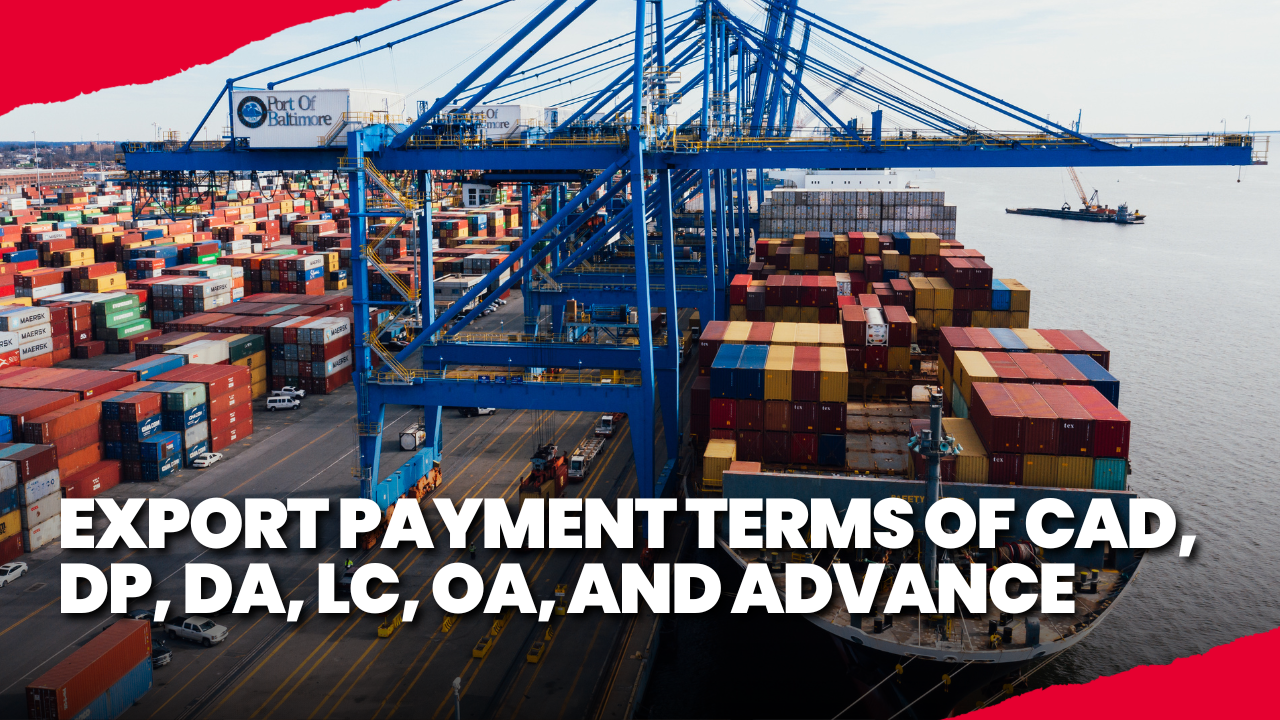
If you want your international commerce transactions to go off without issues, you must be familiar with some basic financial terminology. To safeguard their interests and guarantee prompt payments, exporters rely on terms such as CAD (Cash Against Documents), DP (Documents Against Payment), DA (Documents Against Acceptance), LC (Letter of Credit), OA (Open Account), and Advance Payments. Companies engaging in international trade would do well to understand the DP and LC payment difference to avoid making mistakes that may cost company revenue.
Knowing the DP and LC payment differences can help businesses choose the most suitable payment terms for their transactions, ensuring smoother international trade.
We will explain how, when, and the risks of these key export payment conditions. If you’re a seasoned exporter or just starting in overseas markets, learning the following phrases can help you negotiate confidently and reduce payment defaults.
What Are Export Payment Terms?
The export payment conditions specify when and how the seller will get their money from the buyer. Once agreed upon by all parties, these terms are legally binding and set before the transaction takes place.
To ultimately minimize the impact of payment delays or non-payment on your bottom line, it matters to choose the correct DP payment and LC payment terms while engaging in international trade.
International trading includes multiple governments, legal systems, and financial procedures, increasing the risk of non-payment. That’s why export payment terms are so important; they safeguard exporters’ interests while also responding to buyers’ budgets and personal preferences.
Payment Terms for Exports
International trade requires a number of important payment arrangements, each of which provides a different level of safety and risk to the parties concerned. The most frequent ways are listed here.
OA, or Open Account
A buyer-friendly payment term is an open account. Credit terms can vary from 30 to 90 days when the customer agrees to pay the seller for the items before the seller sends them.
This approach can strengthen connections between long-term partners, but it’s risky for exporters because the buyer gets the items before they pay. Open accounts typically are maintained for situations when both parties appear to be highly trustworthy or where the buyer has a history of paying on time.
Documentary Collection (CAD or DP)
Banks play an intermediary role in the documentation collection process. The exporter’s bank provides the necessary documentation, like the bill of lading, to the collecting bank, which in turn sends it to the buyer’s bank. Payment is due upon receipt of these papers by the buyer.
There are two main types of Documentary Collections:
- Cash Against Documents (CAD) or Documents Against Payment (DP)
Under the CAD or DP terms, the purchaser is responsible for paying the total amount of the invoice as soon as they have the shipping papers.
- Documents Against Acceptance (DA)
Typically, a time draft specifies the future date that the buyer agrees to pay. The release of the items occurs upon the buyer’s approval of the draft.
Compared to an open account, this strategy provides more protection, but it still leaves the exporter vulnerable if the buyer does not pay.
Also Read This: The Role of Exim Bank in Promoting International Trade
Letter of Credit (LC)
One of the most secure ways for importers and exporters to pay is with a Letter of Credit. If the LC terms are satisfied, the buyer’s bank guarantees payment to the exporter. The bank pays the exporter when they provide the necessary paperwork (such as shipping documents) that prove the items have been transported.
Cash in Advance (CIA)
For exporters, the safest payment option is cash in advance, as it is made before items are transported. The vendor is spared any potential risk, but the buyer is stuck with the bill and may be unwilling to agree to the conditions without a prior connection.
Small orders or customers with poor credit generally require Cash in Advance. The risk of non-payment is higher when sending goods to economically or politically unstable places. Therefore, this happens regularly.
Consignment Payment
The exporter keeps ownership of the items until they are sold, but the goods are shipped to a foreign distributor or agency in consignment payments. Also exporter receives payment once the final buyer has purchased the items. The exporter gets money only after the sale, which is flexible yet risky.
They employ consignment if exporters trust their foreign distributors and wish to develop their market presence without quick cash rewards.
Payment Terms for Export Risk Management
- Exporters should carefully examine each transaction and determine the best DP payment and LC payment terms to prevent non-payment and financial loss.
- You must assess the buyer’s creditworthiness, its product type, the buyer’s country’s economic and political situations, and the two parties’ relationship.
Wrapping It Up
Successful international trading requires understanding and adopting the correct payment methods. Exporters take on more financial risk using flexible techniques such as Open Accounts and consignments. DP payment and LC payment offer extra security but need discussion. Exporters decrease risk and develop successful partnerships with international buyers by choosing the most suitable payment plans.
FAQs
Buyers can reduce the seller’s risk of non-payment by paying in advance using Cash in Advance (CIA), which is the safest way for sellers.
DP requires the buyer to pay before getting the shipping documents, whereas DA enables the buyer to accept and pay later.
Also Checkout Our YouTube Channel: @limeinstituteofexportimport






